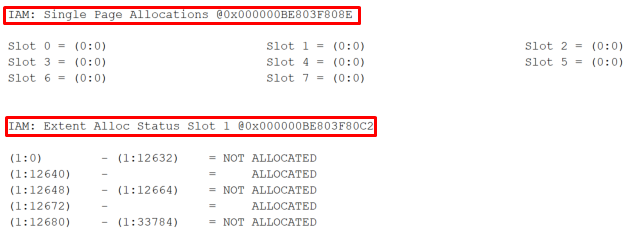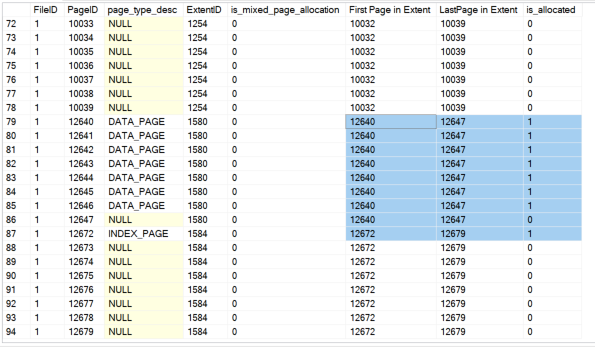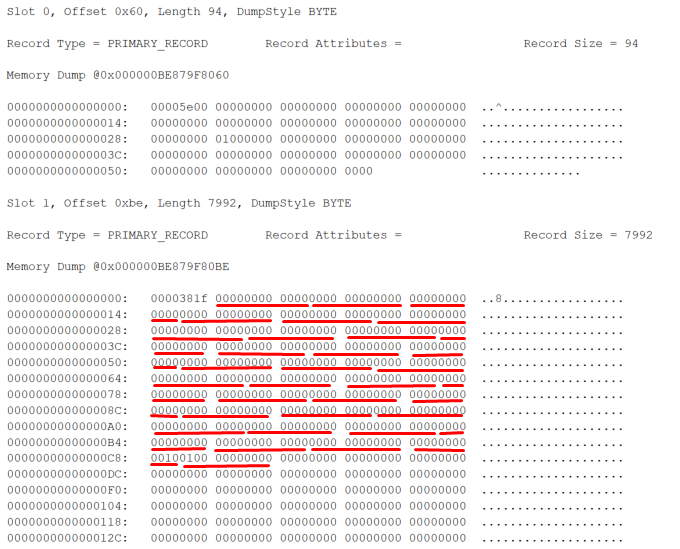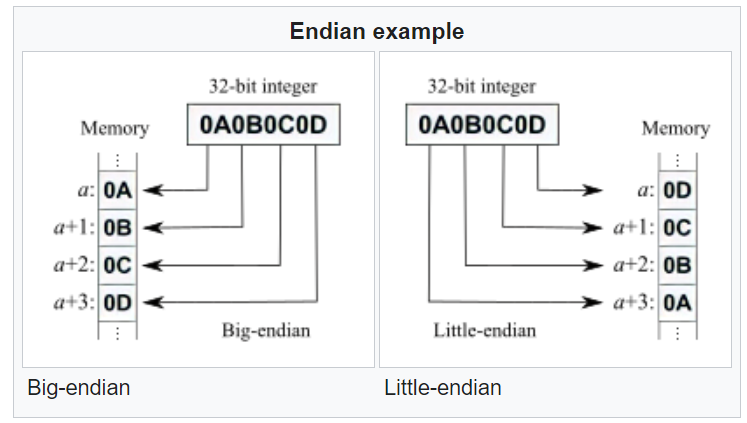SQL Server IAM Page
SQL Server IAM Page
Index Allocation Map (IAM) pages keep track of the extents in a 4 GB section of a database file used by an allocation unit.
Allocation unit
An allocation unit is a set of pages belonging to a single partition in a table or index and comprises pages of one of three storage types:
- pages holding regular in-row data
- pages holding Large Object (LOB) data
- pages holding row-overflow data
Multiple IAM pages
A single IAM page covers only a 4 GB section of a single file.
- if the partition spans files
- if the file is more than 4 GB in size
- if the partition uses pages in more than one 4 GB section
IAM page structure
- 96-byte page header
- An IAM page header
- Contains eight page-pointer slots
- Contains bitmap
- A set of bits that map a range of extents onto a file
- Each bit of the bitmap represents an extent in the range
- 1, is allocated; 0, unallocated
Running the defined procedure sp_AllocationMetadata in
the AdventureWorks2019, we can see the page number of the
first IAM pages.
1 | |

As we can see, the object Employee has 6 partitions. For
the partition that has partition ID of 72057594056933376,
its first IAM page is 2105.
Then let's take a closer look at the page 2105.
1 | |

The 8 slots listed under the Single Page Allocations
mean they are in the mixed extent.
Following the Extent Alloc Status Slot are pages in
uniform extent. The result suggests that page 12640 and
page 12672 are allocated
We can check the allocation status by running the query:
1 | |

As shown in the result, page 12640 and
12672 are allocated, and clearly there are
(12672-12640)/8=4 extents between them, which is proved by
the corresponding extent ID, 1580 and
1584.
Let's validate our observation by dive into the page in mode 1.
1 | |

0000381fis fixed.Slot 0 is for mixed extent; Slot 1 is for the uniform extent
For string
00000000 0010and0100 00000000in Slot 1Each bit in the table stands for one extent.
Note we need to convert little-endian into normal binary.
HEX 00 00 00 00 00 10 Binary (Little endian) many 0 0001 0000 Binary (normal) many 0 0000 1000 HEX 01 00 00 00 00 00 Binary (Little endian) 0000 0001 many 0 Binary (normal) 1000 0000 many 0 That is, for
10 01we have0000 1000 1000 0000in binary, the difference is 4 extent, from1580to1584.